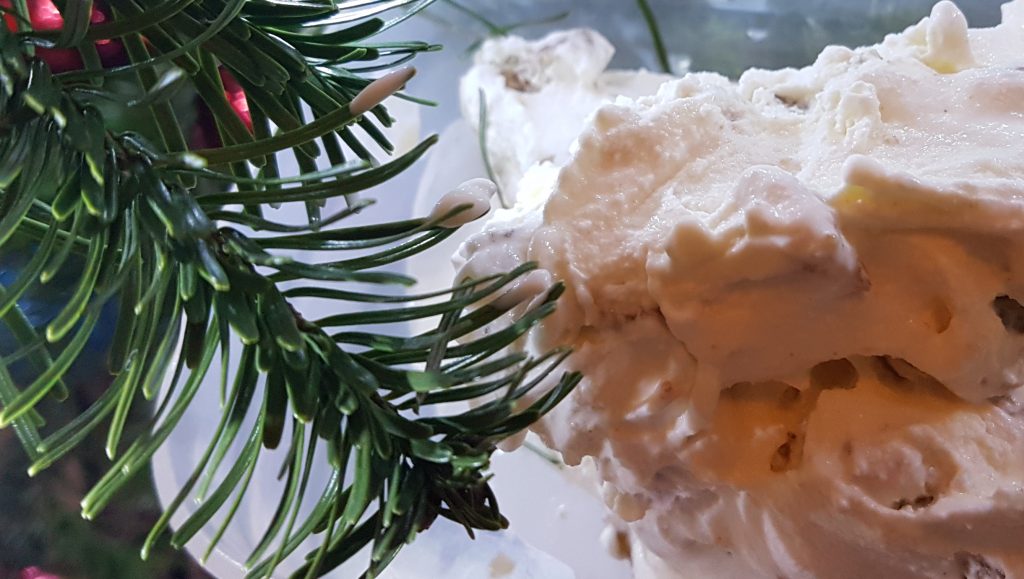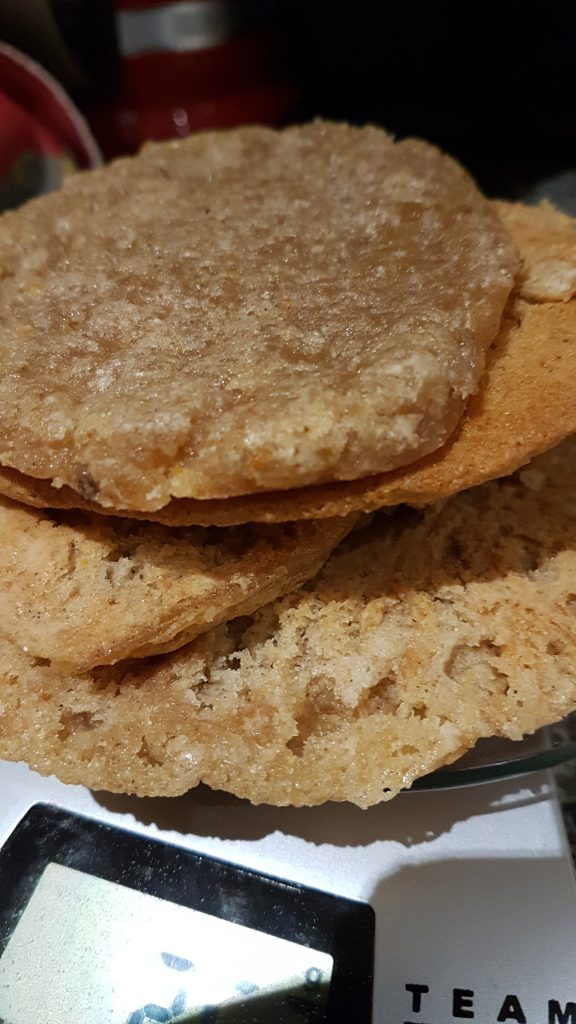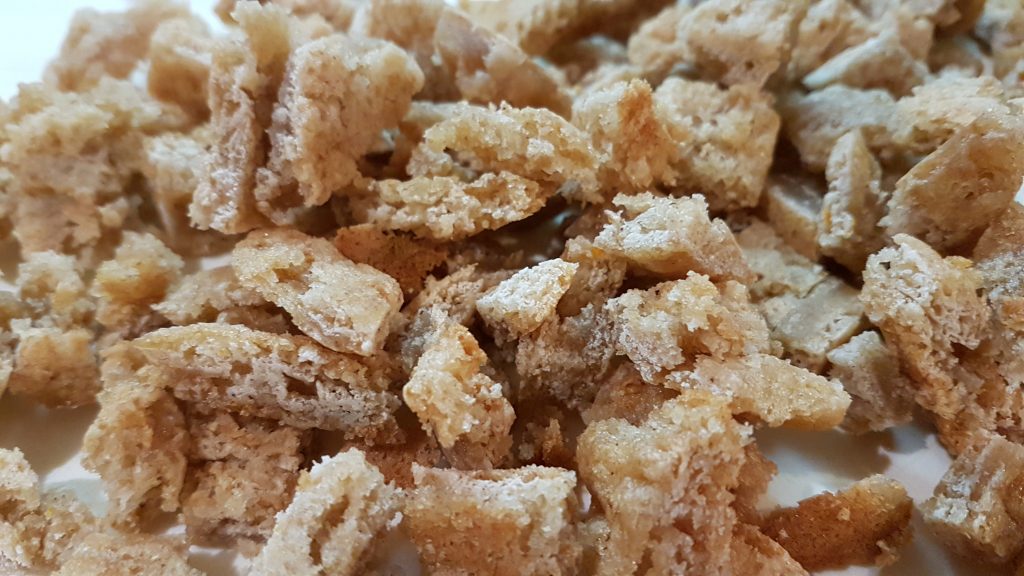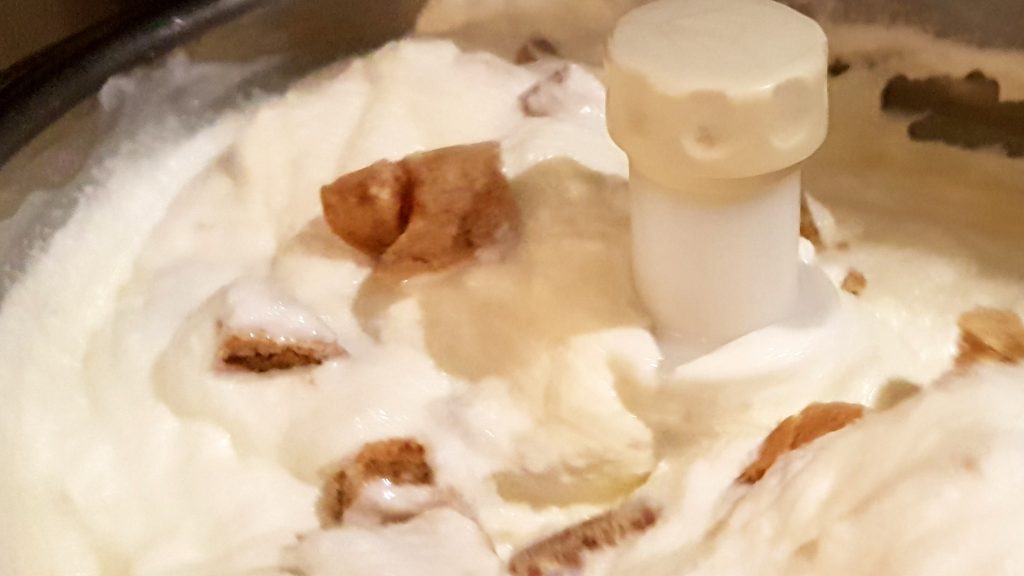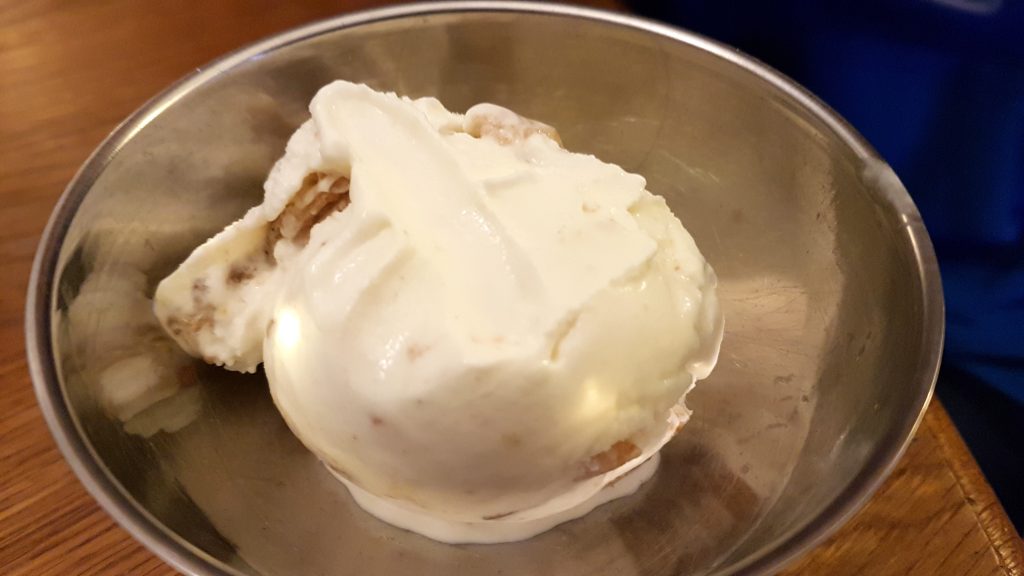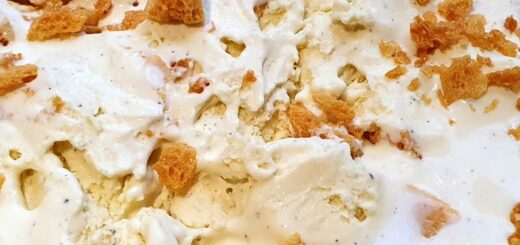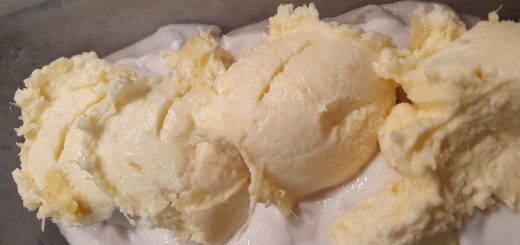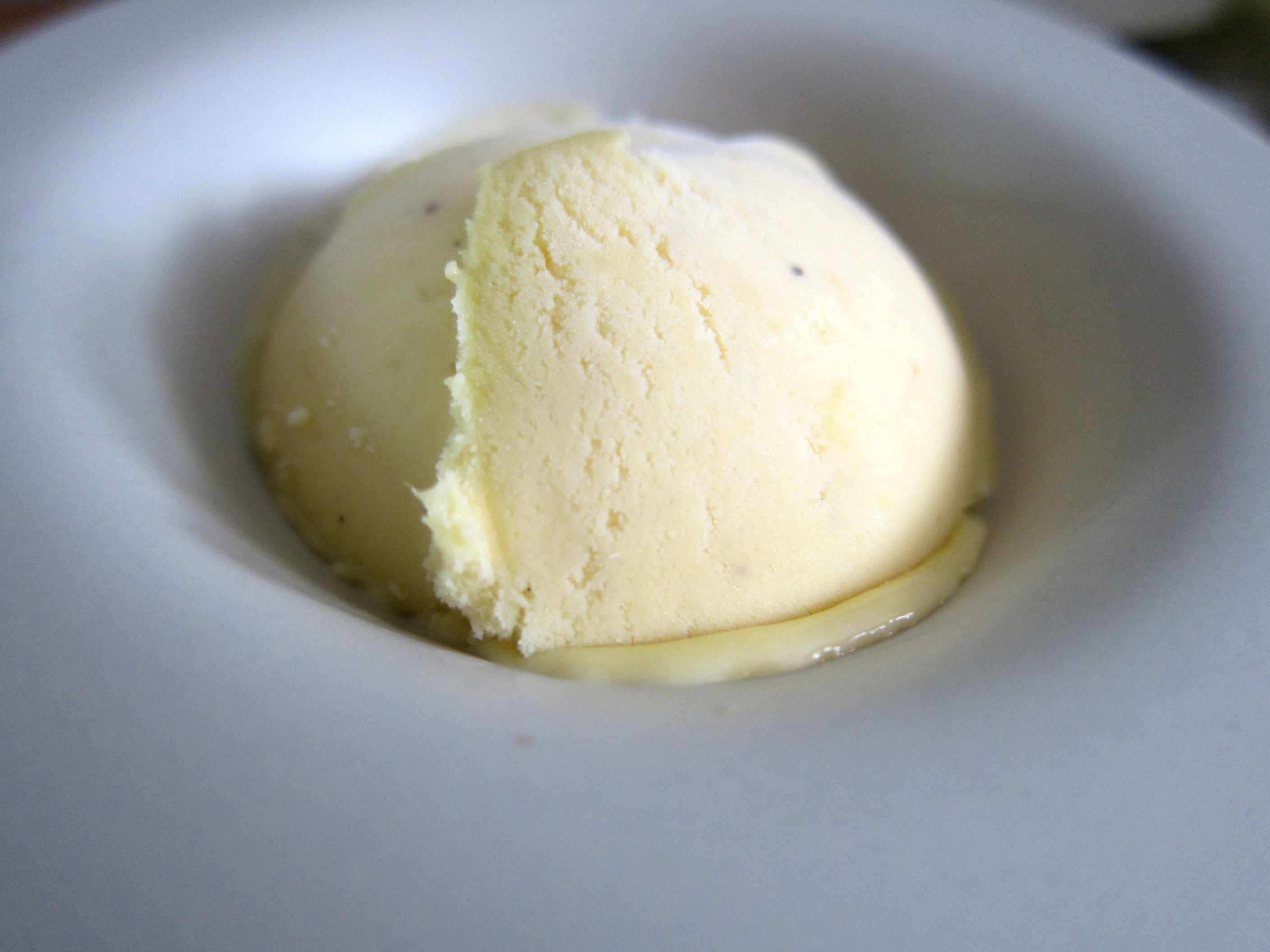Russian gingerbread (Pryaniki) ice cream
Need to keep the evil spirits away? In that case, this ice cream is exactly what you need! Filled to the brim with delicious, chewy pieces of honey-sweetened Russian gingerbread cookies, you should be well protected from all evil!
Pryaniki, traditional Russian gingerbread cookies, have a long history dating back at least to Medieval times. Pryaniki cookies exist in a myriad of different versions and forms: some filled with jam, others decorated with stamped images of saints and symbols or carefully moulded into different shapes.
I decided to strike out and make my very own Pryanik cookies. As they would end up in pieces as mix-ins in my ice cream, I did not spend too much time on careful moulding or visual flair. However, according to the instructive book on the Russian cuisine by Irinia Dergacheva which I used [A F A K unfortunately only available in Swedish], the recipe is still “monastery-style”: I like to believe that this should ensure that even my rough cookies ought to be powerful enough to ward off evil, just like a good Pryaniki should.
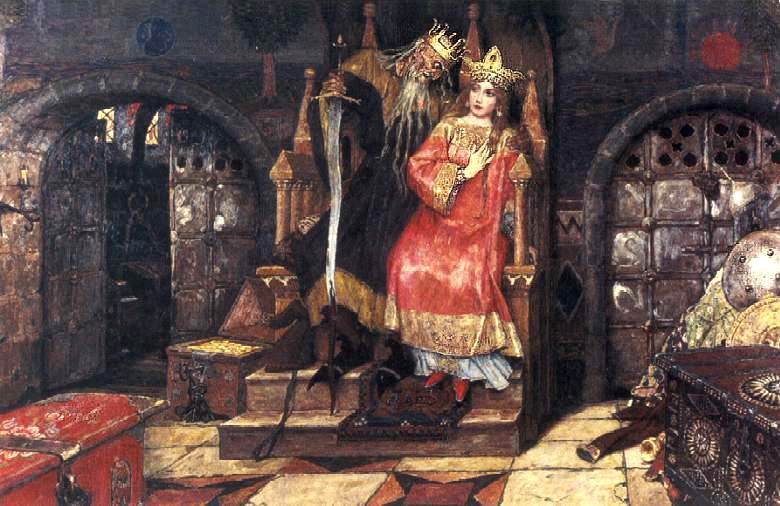
For the sake of the Russians of old times, we can only hope that the Pryaniki also worked their magic against legendary powerful Russian horrors like Koshchey the Deathless (the ugly one in the picture here) or the dreaded arch-witch Baba Jaga. The root of the cookies’ protective powers? – Ginger! This still popular gingerbread spice was known already in medieval times for its purported healing and preserving qualities. From there, it was probably not a big step to add the belief that ginger (also when put into cookies) could ward off evil spirits and protect against other forces of supernatural evil. Baking the cookies in a holy monastery could only make them more powerful.
First step: Bake the cookies!
This is not very difficult. If you can mix all the ingredients together in a bowl you are practically there already!
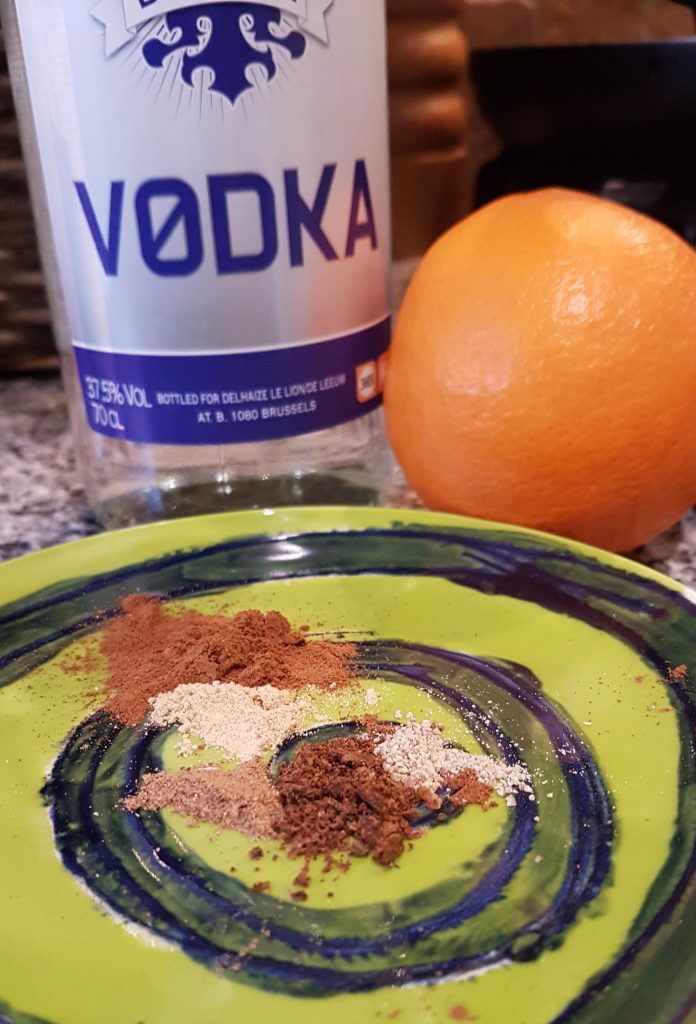
Vodka (!), orange peel and a bunch of traditional gingerbread spices: all necessary for our cookies!
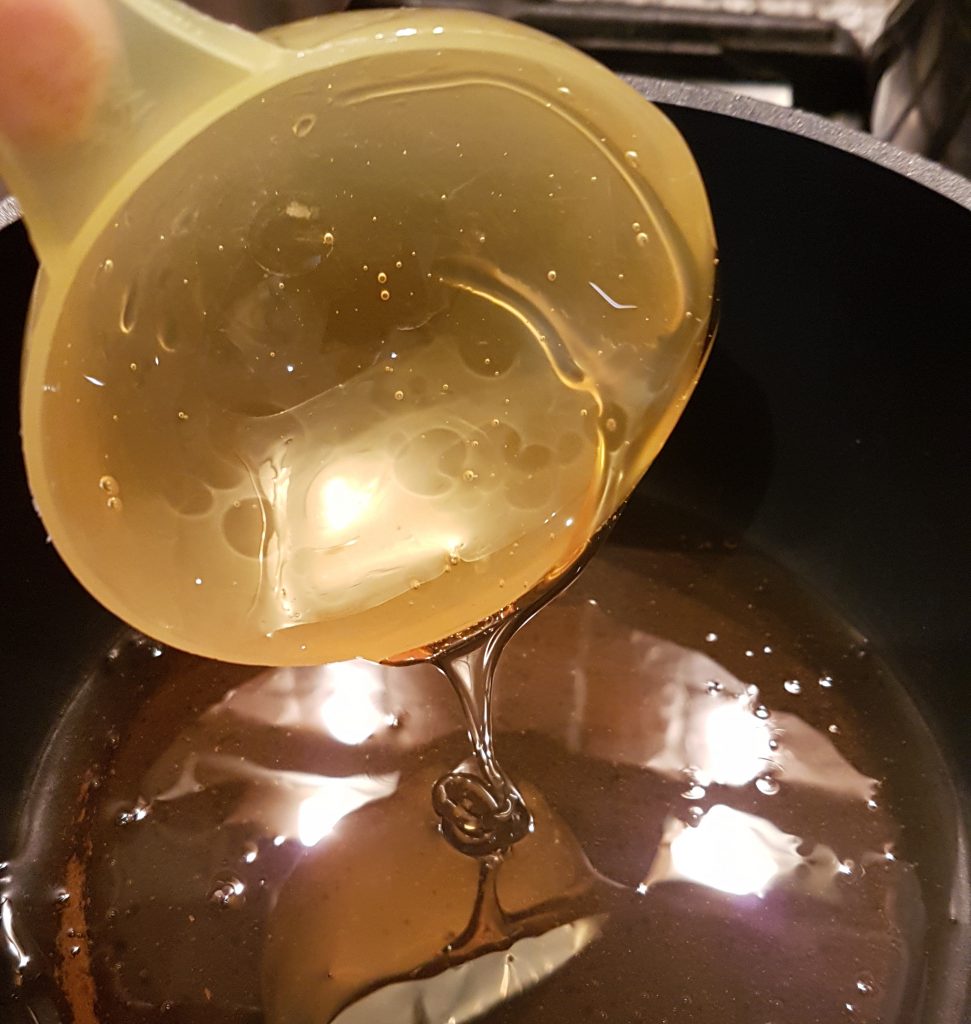
Most of the sweetening comes from honey, so it is no mystery why some prefer to speak about honey cookies rather than gingerbread cookies.
If you would like to follow Irinia Dergacheva’s trusted recipe which I used, here it is:
Pryaniki cookies (Russian monastery style)
Ingredients:
- 300 ml wheat flour
- 300 ml rye flour
- 250 ml honey
- 2 tablespoons sugar
- peel of 1/2 orange
- 150 ml vodka (!)
- 1 millilitre ginger
- 1/2 teaspoon cinnamon
- 1 millilitre pepper
- 1 millilitre cloves
- 1 millilitre nutmeg
Directions:
Heat the honey and add the spices and the orange rind.
Add sugar little by little, then continue by adding the vodka and the flours.
Let the dough rest for 10-20 minutes. Then knead it until it turns lighter.
Let the dough rest under cloth in the refrigerator for at least 30 minutes.
Roll the dough until about 2-3 cm thick.
Cut out the cookies with a knife.
Set the oven for 200 degrees C/392 degrees F. Bake the cakes for about 10-15 minutes. They should be firmer but still chewy.
NOTE: one batch of cookies should provide cookies for about two batches of ice cream. If you get any surplus cookies, they are delicious to eat in their own right!
Pretty straightforward and not overly complicated, I would say.
For those of you who might feel sceptic about all the vodka that goes into the recipe, I can tell you that it does make a positive difference! Some of you may take heart in the fact that the baking of the cookies will evaporate most of the alcohol anyway 😉
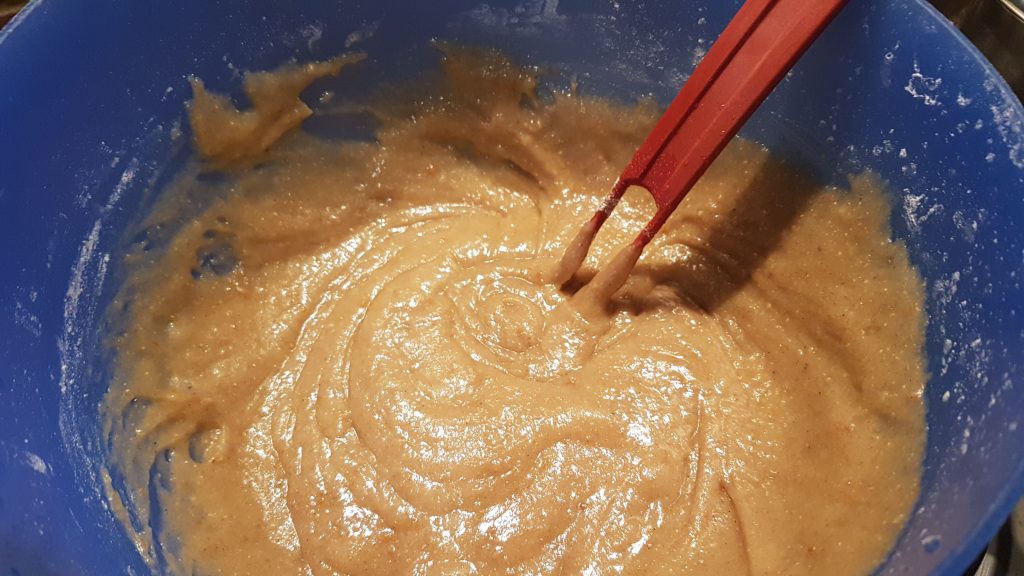
The dough must be one of the gooeyest cookie doughts I’ve ever come across! Several times, I was tempted to go for a cookie dough-ice cream instead … but I guess there will be more times 😉
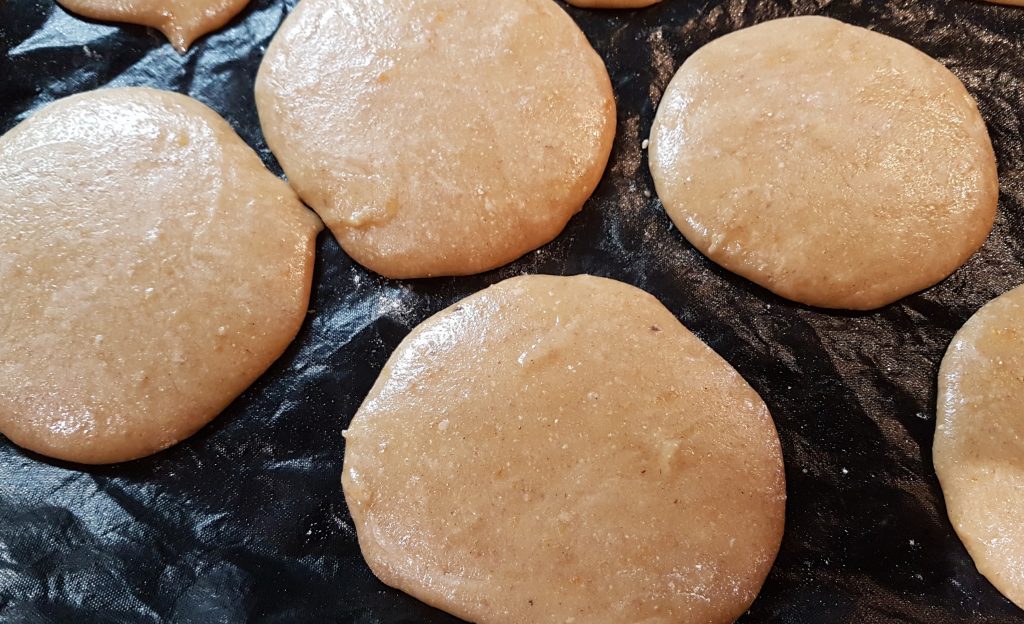
My Priyaki cookies (here waiting to be baked) would probably not win any prize for visual flair. But as long as they taste good (and possibly ward off evil) I can live with that.
Second and last step: Prepare the ice cream base, start churning and add the cookies!
While most bases should work fine, I felt that enough time had been spent on baking the cookies. Impatiently, I turned to my favourite and quick gingerbread-made-with-cookies recipe. As expected, this simple Philadelphia-style base delivered perfectly!
Philadelphia (or American) style ice cream has many advantages: the ingredients are usually simply mixed together cold and straight from the refrigerator. Since there is no need to actually do much preparation, making the actual ice cream can go very, very quickly. Some consider that Philadelphia-style ice creams sometimes give a bit too much of a creamy mouthfeel. I usually add some ordinary tangy yoghurt to offset that, and so also this time.
The verdict: A worthy and delicious Christmas ice cream
- 300 ml (1¼ cup) wheat flour
- 300 ml (1¼ cup) rye flour
- 250 ml (about 1 cup) honey
- 2 tablespoons sugar
- peel of ½ orange
- 150 ml (about ⅔ cup) vodka (!)
- 1 millilitre ginger
- ½ teaspoon cinnamon
- 1 millilitre pepper
- 1 millilitre cloves
- 1 millilitre nutmeg
- 350 ml (about 1.5 cups) cream
- about 75 ml (about 5 tablespoons) yoghurt
- 200 ml (0.8 cup) milk
- 100 ml (0.4 cup) sugar
- about 3 tablespoons (inverted sugar (Agave nectar, honey, corn syrup or equivalent)
- 250 ml (about 1 cup) of the Priyaki gingerbread cookies (see above), cut in pieces
- pinch of salt
- Heat the honey and add the spices and the orange rind.
- Add sugar little by little, then continue by adding the vodka and the flours.
- Let the dough rest for 10-20 minutes. Then knead it until it turns lighter.
- Let the dough rest under cloth in the refrigerator for at least 30 minutes.
- Roll the dough until about 2-3 cm thick.
- Cut out the cookies with a knife.
- Set the oven to 200 degrees C/392 degrees F. Bake the cakes for about 10-15 minutes. They should be firmer but still chewy.
- In a bowl, whisk together all ingredients except for the cookies (cut these into smaller pieces and store in a cold place on the side for later use). Make sure that all the sugar has dissolved and that the ice cream base is whisked nice and smooth.
- Pour the ice cream base into the ice cream machine and churn according to instructions OR (in case you have no machine) still-freeze the ice cream base in your freezer (see the post on that for helpful advise).
- Towards the end of the churning, when the ice cream has started to settle and firm up (but still remains soft), add the small pieces of the Priyaki ginger bread cookie.
- Put the ice cream in a freezer-safe container, put on plastic film and a lid and store in the freezer.
